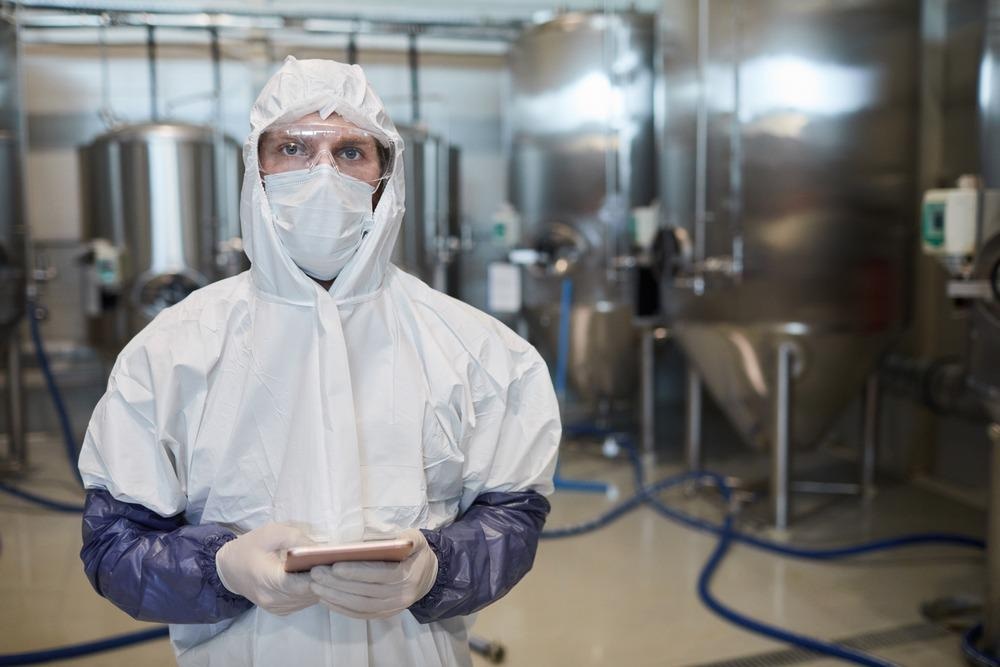Nanomaterials have shown use within the chemical engineering fields due to their small size and great potential in designing efficient catalysts. However, their preparation remains difficult, a challenge that chemical engineering can help to alleviate.

Image Credit: SeventyFour/Shutterstock.com
This article discusses the benefits nanotechnology can bring to chemical engineering, exploring examples from research.
What is Chemical Engineering?
Chemical engineering includes creating substances and materials via chemical methods, including developing apparatus, systems, and procedures for purifying and manufacturing chemicals.
Chemical engineers integrate lab-developed processes into commercial manufacturing processes and then strive to maintain and enhance them. They depend on engineering fundamentals like arithmetic, physics, and chemistry.
Chemical engineering is most typically seen in large-scale production operations, where the objective is to improve efficiency and product quality while reducing costs. The aviation, automobile, pharmaceutical, electronic, industrial, healthcare, and defense sectors employ chemical engineering to manufacture and enhance their technological products.
Examples of these products include ultra-strong fibers, textiles, and adhesives for automobiles; biomimetic materials for implants and prostheses, and coatings for semiconductor applications.
Utilization of Nanotechnology in Chemical Engineering
Chemical engineering has matured to the point that numerous commodity items based on well-established methods are available. It is common knowledge that a material's micro and nanostructure, in conjunction with its chemical composition, is crucial in defining its qualities. Controlling the microstructure as well as composition at the micro and nanoscale is therefore critical for future breakthroughs.
Nanotechnology can be used to manipulate the structure of nanomaterials to enhance their properties. Also, nanotechnology can offer insights into a particle's crystallite and agglomerate size due to the multiple characterization techniques available.
Polymers manufactured in the chemical industry have their structure altered using nanotechnology for use in different chemical applications and industrial activities. Catalysis is a procedure that is often employed in the chemical industry to improve the efficiency of the synthetic chemistry of compounds by speeding up the reaction. Nanotechnology is now being utilized in the chemical industry to develop rules to increase the catalytic performance of industrially manufactured goods.
Nanotechnology is used to clean ceramic and other commercial materials. Ceramic surfaces contain chemicals and industrial wastes that must be removed and cleaned. Nanoparticles are employed to clean surfaces and defend them from environmental damage. Due to their long shelf life, these nanomaterials are effective for extended periods.
Various technologies are employed to increase chemical filtration processes' strength and operating capacity. Nano-filtration is one of the major uses of nanotechnology in chemistry owing to its breakthroughs in compound production at the nanoscale level. Filtration may be done using technical or chemical methods such as using nanowalls with specific pore diameters that allow only liquid to pass through membranes.
Recent Research
Araújo et al. (2020) has recently published a paper on the treatment of actual textile effluent using graphene-based nanomaterials. When released without sufficient treatment, textile discharge is one of the most harmful forms of effluent for both human health and the environment. This research is notable for being one of the first to assess the criteria for using graphene oxide (GO) to clean practical textile effluent. The researchers investigated the degradation efficiency of turbidity and visible color from raw textile effluent using GO.
The impacts of several factors such as GO dose, pH, and contact duration were explored in the context of a salting-out effect-based removal process.
The results of employing GO followed by centrifugation indicated that turbidity was reduced by about 90% in less than an hour, and an optical color removal efficiency of over 76 % was achieved, which is double the value attained with the traditional treatment used in textile mills.
Chemical oxygen requirement was lowered by more than 60%. Tests utilizing GO followed by deposition also yielded encouraging results, with estimated color and turbidity removal efficiency of 66 % and 88 %, respectively. Their findings show that GO might be useful for wastewater treatment in the real world.
Pahlevaninezhad et al. (2021) reported that CO2 absorbance by Fe3O4/water nanofluid in an external magnetic field improves. CO2 absorption in liquid form has gotten a lot of interest as a way to deal with environmental issues.
The influence of Fe3O4 nanoparticles on the CO2-water permeate flux was investigated experimentally in the existence and absence of a magnetic field. In a dropping fluid absorber system, absorption studies were conducted in both turbulent and laminar modes.
Fe3O4/water nanofluid was employed at amounts of 0.001-0.05 vol %. Their findings revealed that introducing Fe3O4 nanoparticles to water enhances the mass flow rate, which rises as the nanofluid concentration increases.
Conclusion and Future Outlook
Chemical engineering employs a variety of processes to synthesize and enhance a wide range of materials. Nanotechnology can alter their structure, allowing them to be used in chemical and industrial processes.
In the future, increased use of nanotechnologies to optimize processes and reduce costs is likely, with applications in wastewater treatment, air filtration and energy storage devices anticipated to continue.
References and Further Reading
Pahlevaninezhad, M., Etesami, N., & Nasr Esfahany, M. (2021). Improvement of CO2 absorption by Fe3O4/water nanofluid falling liquid film in presence of the magnetic field. The Canadian Journal of Chemical Engineering, 99(2), 519-529. https://doi.org/10.1002/cjce.23883
Araújo, C. M., Oliveira do Nascimento, G. F., Bezerra da Costa, G. R., Baptisttella, A. M., Fraga, T. J., de Assis Filho, R. B., ... & da Motta Sobrinho, M. A. (2020). Real textile wastewater treatment using nano graphene‐based materials: optimum pH, dosage, and kinetics for colour and turbidity removal. The Canadian Journal of Chemical Engineering, 98(6), 1429-1440. https://doi.org/10.1002/cjce.23712
Sanwal, P. (2021). Nanoparticle: Role in Chemical Industries, Potential Sources and Chemical Catalysis Applications. Sch Int J Chem Mater Sci, 4(4), 40-45.
Disclaimer: The views expressed here are those of the author expressed in their private capacity and do not necessarily represent the views of AZoM.com Limited T/A AZoNetwork the owner and operator of this website. This disclaimer forms part of the Terms and conditions of use of this website.